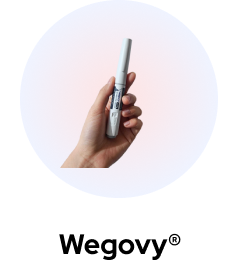Written by: Jill Health Team
Reviewed by: Sarah Bento De Sousa, PharmD RpH
Latisse typically starts showing results on eyelashes within 16 weeks of regular use. This guide is designed to give you a comprehensive overview of the Latisse journey, detailing everything from its application method to expected outcomes and potential side effects. By following this guide, you’ll be well-equipped to achieve those desirable, long lashes with Latisse, while being aware of what to anticipate throughout the process.
What is Latisse?
Latisse is a unique eyelash treatment that stimulates the growth of eyelashes, enhancing their length, thickness, and darkness. This prescription drug, originally developed for treating glaucoma, has found its place in the cosmetic world for its ability to transform the appearance of the eyes.
Unlike regular eyeliner or other eye makeup, Latisse works over a period to promote natural lash growth, making it a potent and transformative solution for those seeking a more permanent enhancement to their lashes.
How Long Before Latisse Shows Results?
The effects of Latisse are gradual, with initial results typically becoming noticeable after 4-6 weeks of consistent application. For the full impact of the treatment to manifest, it generally takes about 16 weeks. During this time, lashes progressively become longer, thicker, and darker.
The rate of growth and the degree of improvement can vary among individuals, but most users observe significant changes by the end of the 16-week treatment period. It’s important to maintain consistent application as directed to achieve the best results. For those looking to potentially speed up this process, there are some tips on how to make Latisse work faster.
Before & After Latisse: What to Expect?
Before starting Latisse, many individuals have lashes that are short, sparse, or light in color. After consistent use of Latisse, users often report a significant improvement in the appearance of their lashes.
Here are example signs BEFORE LATISSE that we are all aware of:
- Sparse or thin eyelashes.
- Short eyelash length.
- Lack of eyelash volume.
- Normal eyelash growth cycle, with typical loss and regrowth.
- No signs of irritation or allergic reaction (important for suitability for Latisse).
Here are example signs AFTER LATISSE
- Gradual increase in eyelash thickness and length.
- Darkening of eyelashes over time.
- Thickening and lengthening of individual eyelash hairs.
- Possible side effects: eye irritation, dryness, or darkening of the eyelid skin (usually reversible upon discontinuation of Latisse).
Lashes typically become significantly longer, thicker, and darker, creating a more defined and striking look for the eyes. It’s important for users to have realistic expectations and understand that results vary from person to person. The full transformation is usually seen after 16 weeks of treatment, but some may notice changes earlier.
How Latisse Differs from Other Eyelash Products
Latisse sets itself apart from other eyelash products like mascaras or eyelash serums. While cosmetic products like mascara temporarily enhance the look of lashes, Latisse offers a more lasting solution by promoting actual growth.
Other over-the-counter eyelash serums might condition and improve the appearance of lashes, but they do not have the clinically proven growth effects of Latisse. As a prescription treatment, Latisse is subject to rigorous testing and approval processes, ensuring its efficacy and safety.
Application Tips and Best Practices
Proper application of Latisse is crucial for achieving the best results and minimizing the risk of side effects. The product should be applied once daily to the base of the upper eyelashes using the sterile applicators provided. It’s important to avoid applying Latisse to the lower eyelid, as this can lead to unwanted hair growth outside the treatment area.
Before applying, make sure the face is clean, makeup and contact lenses are removed, and any facial skin care products have been applied and absorbed.
Using Latisse more than once a day will not increase lash growth and can lead to complications. For a detailed guide on the correct application, visit how to apply Latisse.
When is the Best Time to Apply Latisse?
The ideal time to apply Latisse is at night, after completing your usual skincare routine. Applying it at night ensures that the product remains undisturbed, allowing for maximum absorption and effectiveness.
Additionally, applying at night reduces the likelihood of the product spreading to other areas of the skin or eyes, which can increase the risk of side effects.
Can You Use Mascara with Latisse?
Yes, you can use mascara and other eye makeup while using Latisse. In fact, combining Latisse with mascara can enhance the appearance of your lashes even more. However, ensure that Latisse is fully dry before applying mascara or any other eye products to avoid interference with its absorption.
Here are the simple steps to apply latisse with mascara:
- Apply Latisse First: Use Latisse at night as directed, allowing it to dry completely before going to bed. This ensures maximum absorption without interference from other products.
- Wait Until Morning for Mascara: Apply your mascara as usual in the morning. This gap between Latisse application and mascara use helps to avoid any mixing or smudging.
- Clean Application Tools Regularly: Ensure that both your Latisse applicator and mascara wand are clean to prevent infection or irritation.
- Use Non-Waterproof Mascara: Opt for non-waterproof mascara as it’s gentler on lashes and easier to remove, reducing the risk of lash breakage.
- Gentle Mascara Removal: Remove mascara gently with a mild, oil-free makeup remover to protect your lashes and the effects of Latisse.
- Monitor for Irritation: If you notice any irritation or adverse effects, consider using mascara less frequently or consulting with a healthcare professional.
- Regularly Replace Mascara: To prevent bacterial build-up, replace your mascara every three to four months.
Remember, Latisse is a treatment that requires a prescription, so it’s important to follow the specific instructions provided by your healthcare provider.
Applying Latisse to Lower Eyelids and Eyebrows
Latisse is only approved for use on the upper eyelashes and should not be applied to the lower eyelids or eyebrows unless specifically directed by a healthcare provider. Applying Latisse to areas other than the upper eyelashes can lead to unintended hair growth and other side effects.
Handling Missed Doses and Accidental Eye Contact
If you miss a dose of Latisse, apply it as soon as you remember, but do not double up to make up for the missed dose. If the solution accidentally comes into contact with the eye, there is usually no need for concern as it was initially developed as an eye drop for glaucoma. However, avoid allowing the solution to spread to other skin areas, as this can result in unwanted hair growth.
What Happens when You Stop Using Latisse?
When you stop using Latisse, your eyelashes will gradually return to their original state prior to treatment. This process can take several weeks to months. The effects of Latisse are not permanent, and ongoing use is required to maintain the results.
Key Takeaways
Latisse is a highly effective treatment for enhancing eyelash growth, offering noticeable improvements in length, thickness, and darkness. However, it requires consistent application and patience to see results. Understanding the proper use and potential side effects is crucial for a safe and successful experience with Latisse.
Frequently Asked Questions (FAQs)
How Long Does Latisse Last?
The duration of a Latisse bottle depends on the amount used with each application. Typically, a bottle can last about one month if applied as directed. The effects of Latisse on eyelash growth last as long as the treatment is continued.
Is Latisse Available Over the Counter?
No, Latisse is not available over the counter. It requires a prescription from a healthcare provider due to its active ingredients and potential side effects.
Can Latisse Help Regrow Eyebrows?
While Latisse is specifically approved for eyelash growth, its use on eyebrows is not officially recommended or approved. However, some doctors may prescribe it off-label for eyebrow growth. Always consult with a healthcare provider before using Latisse for any purpose other than eyelash enhancement.











 (US)
(US)